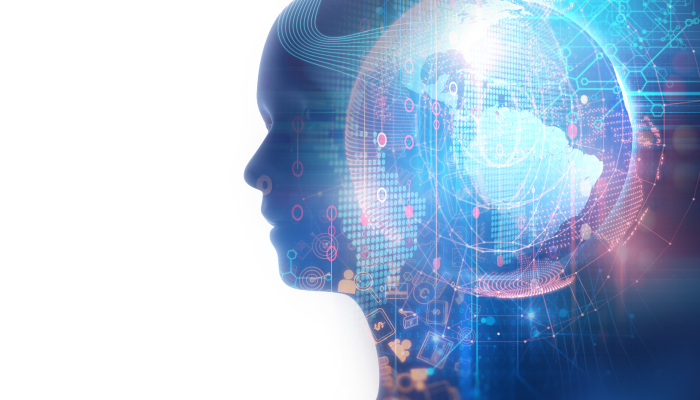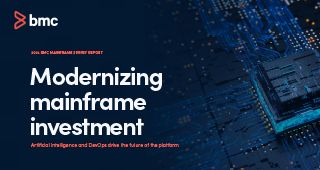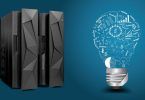In the intricate and fast-paced world of mainframe development, onboarding junior developers represents a formidable challenge. The landscape is littered with extensive and diverse codebases, crafted over the years with varying styles and documentation levels. The challenge of getting new developers up to speed is multifaceted. For instance, there’s a growing expectation among junior developers for access to tool sets that mirror those used in other environments. To meet those demands and ease onboarding, organizations must be able to give them a familiar, modern integrated development environment (IDE).
Moreover, the departure of original application authors and the impending retirement of seasoned developers only compound these challenges. Senior developers find themselves investing significant time in guiding their newer counterparts, conducting exhaustive code reviews, and enforcing standards, especially in distributed teams. From a managerial perspective, this process not only consumes valuable resources but also impacts senior developer productivity and team velocity. Furthermore, there’s a looming concern about the potential introduction of regressions and bugs by less-experienced team members.
Thankfully, amidst these challenges, there emerges a transformative solution: generative artificial intelligence (GenAI).
Generative AI presents a groundbreaking and transformative alternative in the mainframe development process, offering contextual code analysis, automated explanations, and seamless integration of comments and documentation into the codebase. Imagine a world where deciphering complex code becomes streamlined, and the need for extensive manual documentation diminishes. This is the promise that GenAI holds.
Revolutionizing mainframe development
Generative AI revolutionizes mainframe development by enabling comprehensive code analysis and automating explanations; gone are the days of laborious code comprehension. With Code Explain (currently in beta), a new generative AI-infused feature of BMC AMI DevX Code Insights, understanding complex code becomes intuitive and efficient. By providing contextual insights and explanations, the technology empowers developers to navigate intricate codebases with ease, accelerating development cycles and reducing the risk of errors. With its ability to adapt to evolving codebases and provide real-time insights, GenAI becomes an invaluable ally in the development process, ensuring that mainframe applications remain robust and scalable in the face of changing requirements. Below are several examples of how generative AI can change the game for mainframe development.
Enhancing team productivity and velocity
Leveraging generative AI for code understanding and documentation enhances team productivity and velocity. By automating repetitive tasks and providing real-time insights, it frees up valuable time for developers to focus on innovation and problem-solving. Teams can iterate faster, deliver higher-quality code, and adapt to evolving requirements with agility. The increased efficiency and effectiveness translate into tangible benefits for development teams, enabling them to deliver value to stakeholders more rapidly and consistently.
Cost and time savings
The streamlined onboarding of junior developers through generative AI translates into significant time and cost savings while also reducing the burden on senior developers and minimizing the risk of errors introduced by inexperienced team members. Additionally, the automated generation of documentation ensures consistency and accuracy, further enhancing productivity and reducing overhead costs associated with manual documentation efforts. By optimizing resource allocation and minimizing waste, GenAI enables organizations to maximize their return on investment and achieve greater efficiency in their mainframe development processes.
Seamless integration of comments and documentation
Generative AI facilitates the seamless integration of comments and code documentation into the development process. Say goodbye to outdated or inconsistent documentation; with GenAI, documentation becomes dynamic and effortlessly aligned with the codebase. Developers can focus on writing code, confident that the accompanying documentation will be generated automatically, ensuring clarity and maintainability. By providing a centralized repository of up-to-date documentation, GenAI enables teams to collaborate more effectively and ensures that knowledge is preserved and accessible to all stakeholders.
Enhancing code quality
One of the most significant advantages of incorporating generative AI into mainframe development is the enhancement of code quality. Traditionally, organizations have implemented informal standards to make the code easier to work with. New developers who are unaware of those standards can apply changes that are noncompliant with those standards, making future changes more difficult. By providing automated explanations and suggestions, generative AI helps ensure that code adheres to best practices and standards, improving the readability and maintainability of the code while also reducing the likelihood of introducing bugs or vulnerabilities. By promoting consistency and adherence to established coding standards, GenAI helps organizations maintain code quality and reliability over time.
Facilitating knowledge transfer
In addition to streamlining the onboarding process for junior developers, generative AI can also facilitate knowledge transfer within development teams. By automatically generating explanations and documentation, it helps capture and codify the collective knowledge of senior developers. This knowledge is then made accessible to all team members, ensuring continuity and reducing reliance on individual expertise.
Promoting collaboration and communication
Alongside that knowledge sharing, generative AI also fosters collaboration and communication among team members by providing a common understanding of the codebase. By generating consistent and accurate documentation, it ensures that all team members have access to the same information, reducing misunderstandings and miscommunications., promoting a collaborative development environment where team members can easily share ideas, provide feedback, and work together towards common goals. By breaking down silos and facilitating open communication, GenAI helps organizations harness the collective intelligence of their development teams and drive innovation and excellence in mainframe development.
Driving innovation
By automating routine, repetitive tasks such as code explanations and documentation and providing valuable insights, generative AI frees up developers’ time and mental bandwidth so they can dedicate more time to exploring new ideas, experimenting with different approaches, iterating quickly, and pushing the boundaries of what is possible. This ultimately fosters innovation and creativity within the organization, helping it stay ahead of the curve and deliver cutting-edge solutions to its customers.
Conclusion: Generative AI represents a paradigm shift in mainframe application development
In today’s fast-paced digital landscape, the ability to adapt to changing requirements is crucial for success. Generative AI equips development teams with the flexibility and agility to respond quickly to evolving business needs. By automating code analysis and documentation, it enables developers to iterate rapidly, experiment with new features, and pivot as necessary. This ensures that mainframe applications remain responsive to changing market demands and business priorities. With GenAI, organizations can embrace change with confidence, knowing that their development processes are agile and adaptable to whatever the future may hold.
In conclusion, generative AI represents a paradigm shift in mainframe development, offering a solution to the longstanding challenges associated with onboarding junior developers and maintaining codebase integrity. By harnessing its power, organizations can streamline their development processes, enhance team productivity, and stay ahead. It’s not just about adopting a new technology; it’s also about unlocking the full potential of mainframe development and driving innovation in the digital era.
For more information or to be a part of the Code Explain beta program, email us at [email protected].







